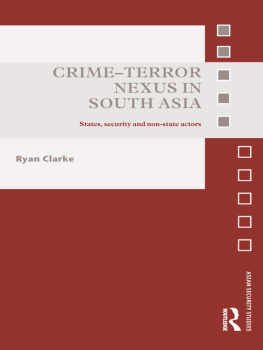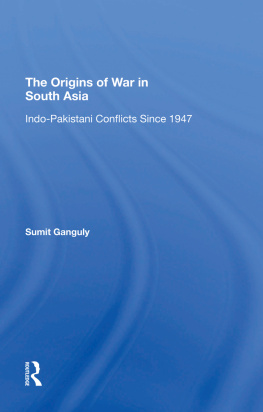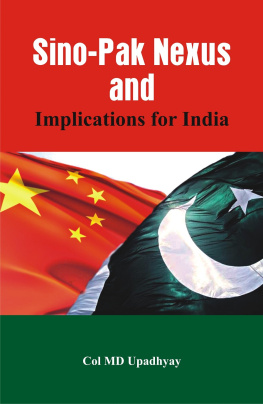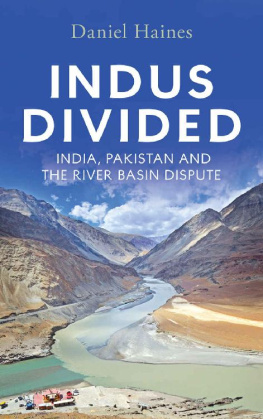Cold War in the High Himalayas
The USA, China and South Asia in the 1950s
Cold War in the High Himalayas
The USA, China and South Asia in the 1950s
S. Mahmud Ali
First published 1999 by United States of America
Published 2018 by Routledge
2 Park Square, Milton Park, Abingdon, Oxon, OX14 4RN
52 Vanderbilt Avenue, New York, NY 10017
Routledge is an imprint of the Taylor & Francis Group, an informa business
Copyright 1999 by S. Mahmud Ali
All rights reserved. No part of this book may be reprinted or reproduced or utilised in any form or by any electronic, mechanical, or other means, now known or hereafter invented, including photocopying and recording, or in any information storage or retrieval system, without permission in writing from the publishers.
Notice:
Product or corporate names may be trademarks or registered trademarks, and are used only for identification and explanation without intent to infringe.
Library of Congress Cataloging in Publication Data
Ali, S. Mahmud, 1952-
Cold war in the high Himalayas : the USA, China, and South Asia in the 1950s / S. Mahmud Ali.
p. cm.
Includes bibliographical references and index.
ISBN 0-312-22693-4 (cloth)
1. Himalaya Mountain Region-Politics and government. 2. South Asia-Foreign relations-United States. 3. United States-Foreign relations-South Asia. 4. South Asia-Foreign relations-China. 5. China-Foreign relations-South Asia. 6. Cold War. I. Title.
DS485.H6A62 1999
954.96-dc21
99-32300
CIP
ISBN 13: 978-0-7007-1169-7 (hbk)
ISBN 13: 978-1-138-87889-1 (pbk)
Contents
One of the many benefits of the end of the cold war is the opportunities it has provided to make sense of its history. The opening up of the archives of the former Soviet Union has been the most obvious boost, and this has already had important consequences for our understanding of the origins of the cold war and the struggle for Europe that was at its heart. In addition historians have examined in detail its most important conflicts, such as Vietnam. Those areas of struggle between east and west that rarely made the headlines at the time are still, however, suffering from neglect.
One such area is South Asia. As the scene of the first great post-war decolonisation it was an area of great sensitivity in the competition between the first and second worlds to influence the politics of the emerging third world. The importance of this rivalry is given far too little attention in cold war historiography. More specifically, the study of US-Chinese relations is often discussed as part of a triangular diplomacy involving the Soviet Union, without any mention of India and Pakistan as critical players. Indian Prime Minister Pandit Nehrus personal authority in the international politics of the 1950s is now largely forgotten.
Moreover, the internal and external conflicts that developed within the region in the stormy years after partition have not been resolved. The position of Tibet, whose unhappy fate figures prominently in this book, is still an issue of enormous sensitivity for the Peoples Republic of China. India and Pakistan have yet to find a way to resolve the differences, and we now must rely on mutual nuclear deterrence to prevent yet another war.
Mahmud Ali knows South Asia well. He experienced first hand its conflicts before coming to Britain. He has now established himself as an able commentator on its affairs, with an unusually detached perspective. He has now provided a great service by throwing light on one of lesser known aspects of the cold war, the close co-operation between India and the United States against communist China, focusing on Tibetan resistance to Chinas occupation of their country. With impressive documentation he has opened up to scrutiny a fascinating though sad episode, demonstrating the complex interaction between American efforts to contain communism and the pursuit of more parochial concerns by regional leaders.
Lawrence Freedman, London, 1999
This book is the end-product of a process which began at Kings College, London, in 1986. The text, however, was not completed until the summer of 1998. Over these twelve-odd years, a very large number associates, colleagues and friends have helped in a variety of ways, often willingly, sometimes unwittingly, and occasionally, inadvertently. Some, because of their official positions, have been unable or unwilling to be identified by name but their contribution is no less significant for that. Among the many people whose assistance, advice and support made this project possible, a few must be mentioned. They are Anders H. Andersen, Jane Ardley, David Cowhig, Prof. Lawrence Freedman, Prof. A Tom Grunfeld, David L. Haight, Michael Adam Janson, David Kauffner, John Kauffner, Prof. David Kopf, Dr Peter Mangold, Chris Mullin, M.P., Dr David Page, June Payne, Kirsten J. Pedersen, Maura Porter, Wangdu Tsering Shakya, Daniel Smith and Elizabeth Wright. The book has also benefited considerably from the encouragement extended by Jonathan Price, Chief Editor at Curzon Press.
The patience, tolerance and forbearance shown by Selina, my wife, and Sunehra, my daughter, proved indispensable to the completion of this project. By taking care of most of my worldly needs during the period of protracted research and the writing itself, they made this a realistic enterprise and joined the legion of my collaborators. However, the endproduct, warts and all, is essentially my own responsibility and I alone am liable for any damage that may have been caused.
S. Mahmud Ali, London
Dean Acheson US Secretary of State in the early 1950s, Dean Acheson was the first US policymaker to deal with Tibetan plea for support. In June 1951, three months after the first US-India Mutual Defence Assistance Agreement was signed, he told the Tibetans that his government was sympathetic and willing to provide arms and ammunition to the resistance, but only if the Tibetans maintained a cohesive struggle against Beijing. This was the beginning of Washingtons formal entry into Tibetan affairs and the evolution of Indo-US relationship into a strategic alliance against Communist China.
Gompo Tashi Andrugtsang Tibetan merchant-prince and resistance leader. He enjoyed the Dalai Lamas tacit support and rose to command the formal structure of the Tibetan resistance, the Chushi Gangdruk. His fighters harried the PLA and took the war from the eastern provinces of Kham and Amdo to the central U Tsang and southern Lhoka regions in the late 1950s, and to Lhasa itself in 1959. However, he claims to have been uninvolved in the Lhasa revolt and the flight of the Dalai Lama in March 1959 when he was fighting the PLA away from the capital. This account strengthens the view that the Dalai Lamas flight was masterminded by US-armed guerrillas and the Dalai Lamas Chamberlain, Phala, co-ordinating closely with the CIA based in Dhaka, East Pakistan.
Mohammad Ali Pakistani Prime Minister in the early 1950s who took his country into deepening military alliance with the US although Pakistans primary motivation was fear of India rather than of Communism. His correspondence with his Indian counterpart, Nehru, brought them close to an agreement in late 1953 on holding a plebiscite in Jammu & Kashmir. However, Delhis discovery of an imminent US-Pakistan security agreement led Nehru to renege on that accord. In the late 1950s, as Pakistans Foreign Minister, Mohammad Ali initiated border talks with the Chinese which provided Pakistan with strategic leverage vis-a-vis India but angered both Washington and Delhi.









